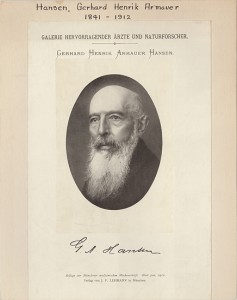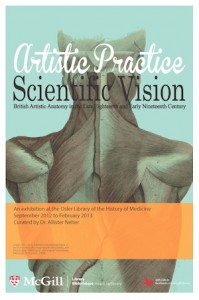January 30th is World Leprosy Day. Observed either on this day or the nearest Sunday, the day is designed to raise public awareness of leprosy, historically one of the most stigmatized illnesses.

Portrait of Gerhard Henrik Armauer Hansen (1841-1914), a Norwegian physician best known for identifying Mycobacterium leprae, the bacterium that causes leprosy, or Hansen’s disease. (Munich: J. F. Lehmann, 1912.) From the Osler Library Prints online.
See an article from the current issue of The Lancet about the success of eradication strategies in Iran. (McGill users)
The authors write:
Although leprosy was officially eliminated more than a decade ago, the disease has not been completely eradicated and the scars from the past linger on. Iran, with an annual incidence of less than 100 cases, is among the regions in which strategies recommended by WHO have been implemented successfully thanks to the availability of free multidrug therapy and leprosy elimination campaigns.
Read all about it with some resources from our circulating collection:
Boeckl, Christine. Images of leprosy: disease, religion, and politics in European art. Kirksville, Mo. : Truman State University Press, 2011.
Liang, Qizi. Leprosy in China: a history. New York : Columbia University Press, 2009.
Rawcliffe, Carole. Leprosy in medieval England. Woodbridge, UK ; Rochester, NY : Boydell Press, 2006.
Demaitre, Luke. Leprosy in premodern medicine: a malady of the whole body. Baltimore : Johns Hopkins University Press, 2007.
Or take a virtual tour of New Brunswick’s 19th century leper hospital here. Between 1844 and 1949, 327 patients with leprosy were housed and treated at this lazaretto.



